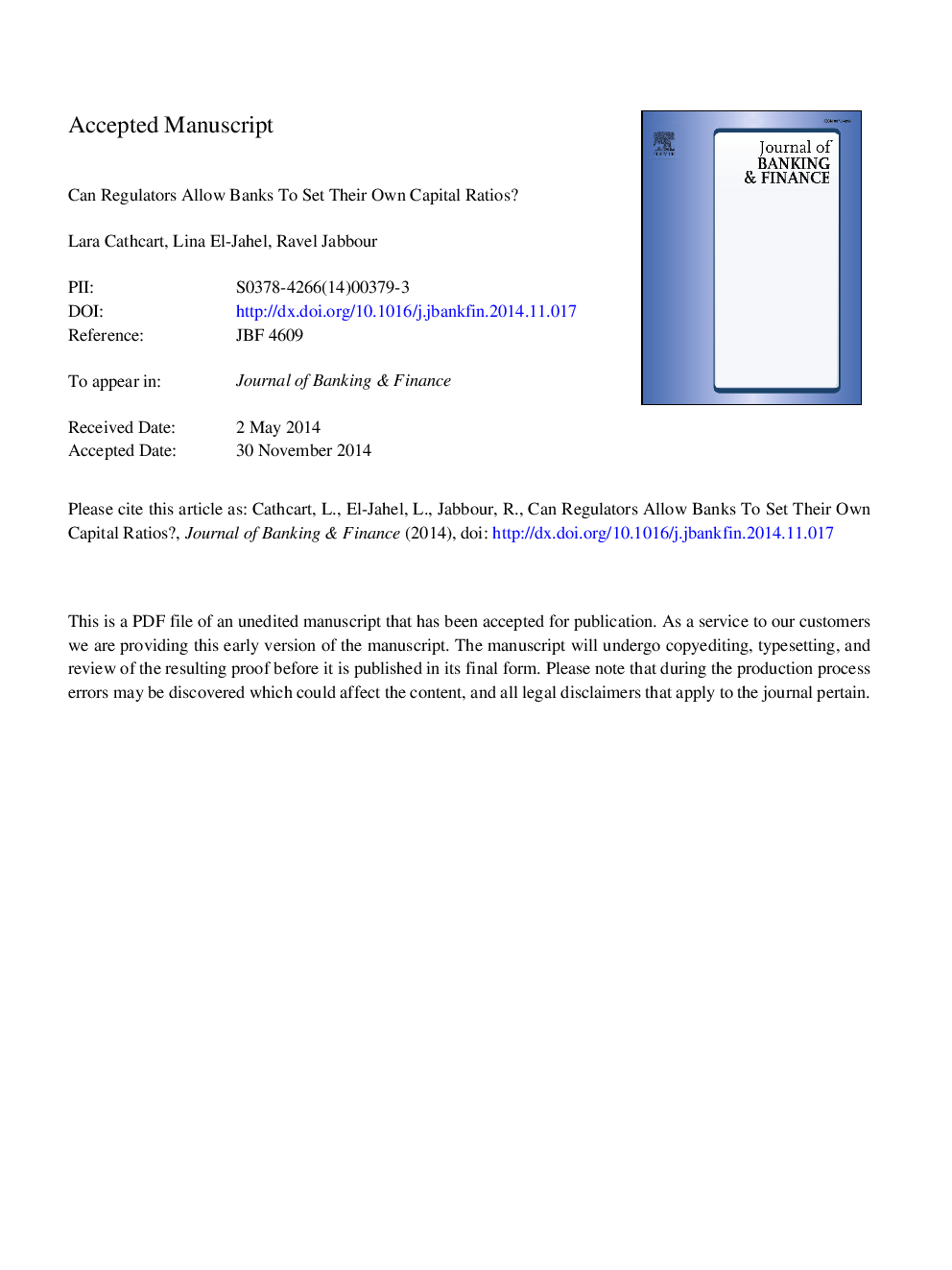| Article ID | Journal | Published Year | Pages | File Type |
|---|---|---|---|---|
| 5088716 | Journal of Banking & Finance | 2015 | 25 Pages |
Abstract
Basel regulators have received widespread criticism for failing to prevent two credit crises that hit the U.S. over the last two decades. Nonetheless, banks were considerably overcapitalized prior to the onset of the 2007-2009 subprime crisis compared to those which had undergone the 1990-1991 recession. Therefore, if capital requirements were achieved prior to the subprime crisis, how could the Basel framework be blamed again for having accelerated if not caused another credit crunch? We find that the answer to this question lies in the relationship between the capital ratio and the leverage ratio which is governed by risk-weights categories determined by the Basel regulation. We show that changes to risk-weight categories which affect the correlation pattern between both ratios are not reflected in the subprime crisis. This minimizes the implication of the Basel II regulation in the crunch that succeeded its announcement, in contrast to Basel I. We demonstrate that these dynamics are governed by a formula linking the two ratios together which derives from the sensitivity of the risk-based capital ratio to a change in its risk-weight(s). One implication of our work regarding the Basel III regulation consists in validating the newly established capital increments in a mathematical rather than heuristical approach.
Keywords
Related Topics
Social Sciences and Humanities
Economics, Econometrics and Finance
Economics and Econometrics
Authors
Lara Cathcart, Lina El-Jahel, Ravel Jabbour,
